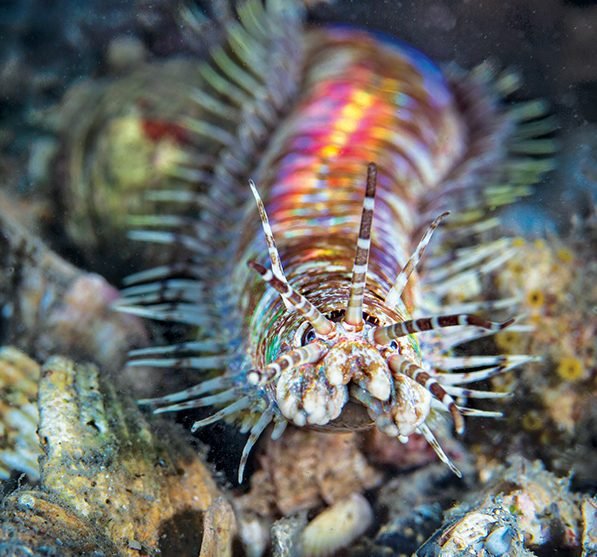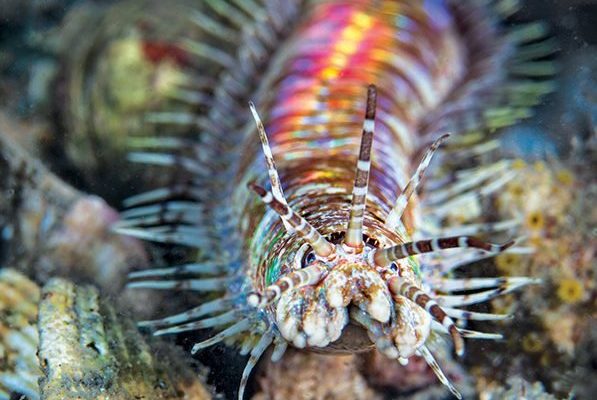
Now, you might be wondering why public aquariums even bother with Bobbit worms. Aren’t they just weird, deep-sea oddities? Here’s the thing: these worms contribute to the biodiversity of marine life and can show us a lot about our oceans. They’re also a great conversation starter! However, keeping them in an aquarium setting isn’t as straightforward as it sounds. You need to understand their behavior, habitat needs, and how to display them without causing stress or harm. Let’s dive deeper into this topic together.
Understanding Bobbit Worms: An Overview
Before we get into handling and displaying Bobbit worms, let’s take a moment to understand what they are. Bobbit worms, or *Eunice aphroditois*, are fascinating marine annelids found in tropical and subtropical waters. They’re named after the infamous Lorena Bobbitt, and for good reason. These worms are notorious for their hunting method: they can ambush fish and other marine organisms with lightning speed.
These creatures live in burrows they create, usually made of sand and debris, which provides them both shelter and a perfect spot to hunt. With their long, segmented bodies and colorful bristles, they can blend in perfectly with the ocean floor. If you ever catch a glimpse of one in an aquarium, you’ll likely see just their head peeking out of the substrate. It’s like spotting a secret agent in a spy movie—exciting and a little mysterious!
Bobbit worms can grow quite large and are known for their aggressive nature, especially when it comes to feeding. They can snap at prey with incredible force, making them a highlight in any marine display. Just be mindful; they’re not the cuddly type!
Habitat Needs: Creating a Safe Environment
Creating an optimal habitat for Bobbit worms in public aquariums is crucial. These creatures need a sandy substrate where they can burrow comfortably. Think of it as their little apartment in the tank! The substrate should be deep enough—at least a few inches—to allow them to dig in and feel secure.
Water quality is another vital aspect. Bobbit worms thrive in clean, well-oxygenated water. Regular testing for pH, salinity, and temperature helps mimic their natural habitat. Ideally, these worms prefer a temperature range of 75°F to 82°F (24°C to 28°C). Keeping the water clean helps prevent diseases that could affect their health and well-being.
It’s also important to consider tank mates. Bobbit worms can be territorial and aggressive, especially towards smaller fish. So, if you’re thinking about adding them to a community tank, choose tank mates wisely. Larger fish that won’t be seen as prey can be more suitable companions.
Handling Bobbit Worms: Best Practices
Handling Bobbit worms requires a gentle approach, as they can be sensitive to stress. If you need to transfer one for any reason—say, for tank maintenance—make sure to do it carefully. Use a soft net or a container to avoid causing injury. Honestly, no one wants to find themselves on the business end of that sharp mouth!
When transporting them, keep the environment as similar as possible to their tank. This means maintaining the right water temperature and salinity levels. You don’t want to shock the worm; that can lead to serious health issues.
While it’s essential to keep a close eye on their health, avoid poking and prodding them unnecessarily. Bobbit worms can react defensively if they feel threatened. It’s best to observe them in their habitat, allowing them to flourish without interference.
Display Techniques: Showcasing Bobbit Worms
When it comes to displaying Bobbit worms, the key is to make them feel at home while still allowing visitors to appreciate their beauty. You might have seen these worms peeking out from their burrows at aquariums. This behavior can be encouraged by creating a well-structured environment.
Use rock formations or decor that mimics their natural habitat. Adding hiding spots and places for them to burrow can help them feel secure, while also giving visitors a good view. Remember, the goal is to balance aesthetics with the worm’s need for a safe environment.
Lighting plays a significant role too! Dim lights can simulate a deeper ocean environment, which many aquarists use to keep Bobbit worms feeling safe and secure. However, you want to find a sweet spot. Too dim, and the worms may stay hidden; too bright, and they might feel exposed and stressed.
Educational Opportunities: Engaging Visitors
Bobbit worms present wonderful educational opportunities for public aquariums. They can be used to teach visitors about marine biodiversity, ecosystems, and the fascinating adaptations of ocean life. Consider integrating information displays next to the tank that explain their behavior and habitat needs.
Interactive talks or feeding demonstrations can also enhance the experience. Imagine gathering a small group of visitors to watch as staff feed the worm! It adds excitement and gives people a chance to learn about their unique hunting strategies up close.
You could even create a “Bobbit Worm Day” event, where families can come in and learn more about these creatures. Providing activities like crafts or educational handouts can help reinforce what visitors learn and spark a lasting interest in marine life.
Challenges and Considerations in Public Aquariums
While Bobbit worms are a fascinating addition to public aquariums, there are challenges to consider. Their aggressive nature can lead to conflicts if not managed properly. As mentioned earlier, they shouldn’t be housed with smaller fish or overly passive tank mates. This requires careful planning and monitoring to ensure a peaceful environment.
Another challenge is keeping their environment stable. Changes in water quality or temperature can stress Bobbit worms, making it essential to maintain consistent conditions. Aquarists need to be diligent about water testing and filtration.
Lastly, these worms don’t exist in isolation; they’re part of a larger ecosystem. Understanding how they fit into tank dynamics can help aquariums plan their displays and interactions with other marine life. Essentially, everyone in the tank needs to get along for the show to go on!
Bobbit worms are truly remarkable creatures that bring a unique flair to public aquariums. From their captivating hunting methods to their vibrant colors, they offer visitors a glimpse into the wonders of ocean life. Taking care of them requires a solid understanding of their behavior and habitat needs. When done correctly, these fascinating worms can thrive and engage audiences in a meaningful way.
So, whether you’re an aquarist or just an ocean enthusiast, remember that the world of Bobbit worms holds endless opportunities for discovery. By fostering a safe and engaging environment for these creatures, we can ensure they continue to intrigue and educate future generations. Dive in and enjoy the wonders of the underwater world—Bobbit worms included!

